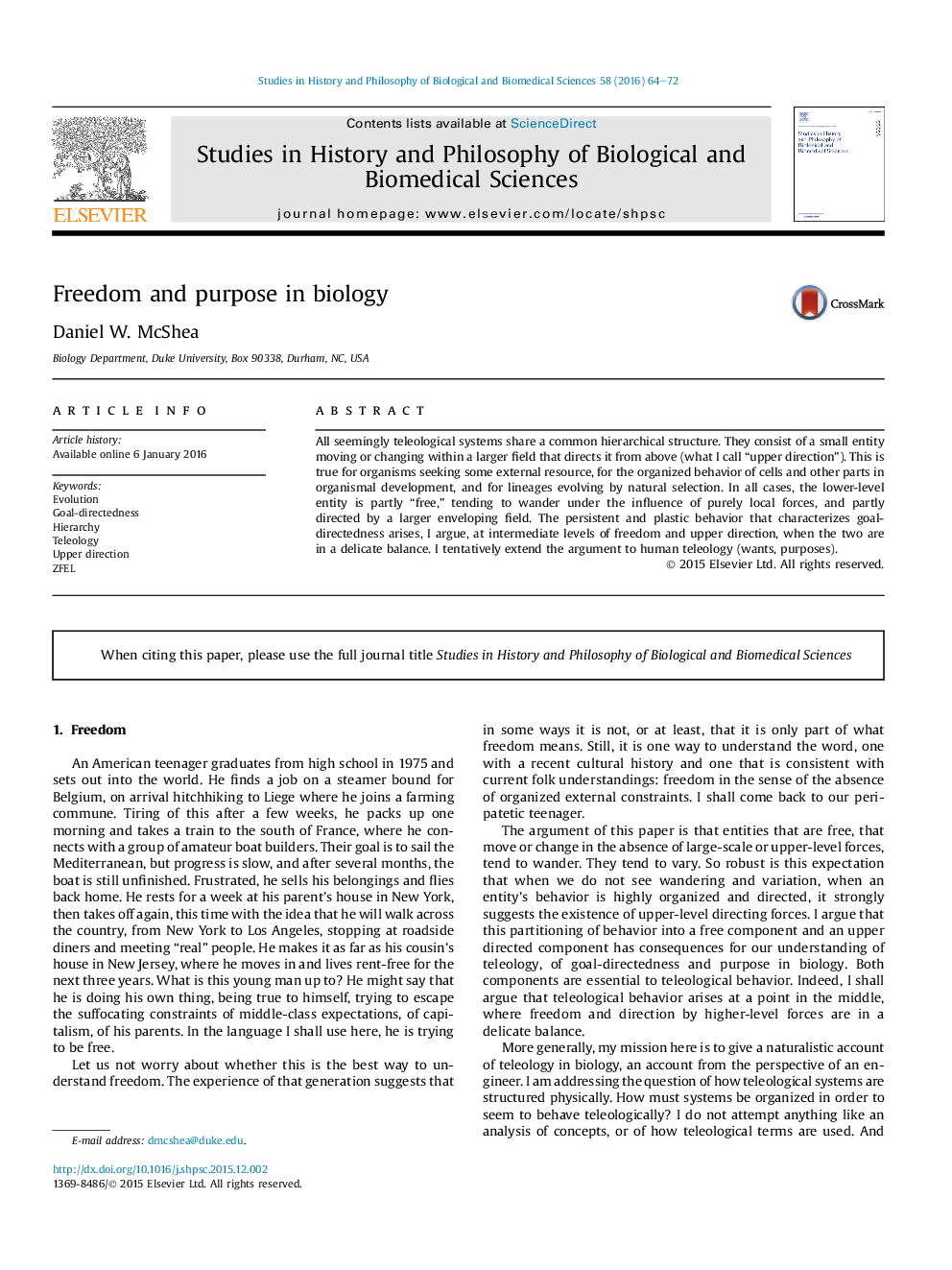| Article ID | Journal | Published Year | Pages | File Type |
|---|---|---|---|---|
| 1162144 | Studies in History and Philosophy of Science Part C: Studies in History and Philosophy of Biological and Biomedical Sciences | 2016 | 9 Pages |
•All seemingly goal-directed systems share a common hierarchical structure.•Seemingly goal-directed entities are partly free and partly directed by enveloping fields that contain them.•Persistent and plastic behavior in apparently goal-directed entities is explained by their immersion in such fields.•Seeming goal-directedness arises at intermediate levels of freedom and upper direction.
All seemingly teleological systems share a common hierarchical structure. They consist of a small entity moving or changing within a larger field that directs it from above (what I call “upper direction”). This is true for organisms seeking some external resource, for the organized behavior of cells and other parts in organismal development, and for lineages evolving by natural selection. In all cases, the lower-level entity is partly “free,” tending to wander under the influence of purely local forces, and partly directed by a larger enveloping field. The persistent and plastic behavior that characterizes goal-directedness arises, I argue, at intermediate levels of freedom and upper direction, when the two are in a delicate balance. I tentatively extend the argument to human teleology (wants, purposes).
